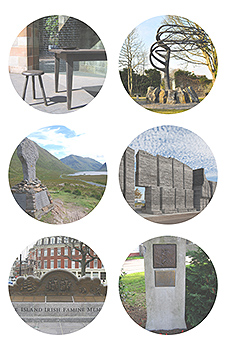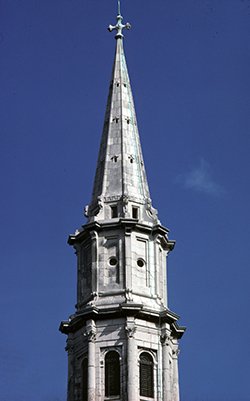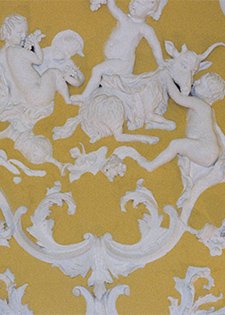
Art and Architecture of Ireland published for the Royal Irish Academy and the Paul Mellon Centre by Yale University Press is an authoritative and fully illustrated account of the art and architecture of Ireland from the early Middle Ages to the end of the twentieth century. The volumes explore all aspects of Irish art and architecture - from high crosses to installation art, from Georgian houses to illuminated manuscripts, from watercolours and sculptures to photographs, oil paintings, video art and tapestries. This monumental work provides new insight into every facet of the strength, depth and variety of Ireland's artistic and architectural heritage.
The Art and Architecture of Ireland project was initiated in the UCD School of Art History and Cultural Policy by two members of staff: Paula Murphy and Nicola Figgis. Described as one of the most ambitious projects ever undertaken in the Humanities in Ireland, the results of collaborative research will be published in five volumes in 2014 by Yale University Press, under the aegis of the Royal Irish Academy, and with the financial support of the Department of Arts, Heritage and the Gaeltacht, the Naughton Trust and other private sponsors. Volumes II and III are by Nicola Figgis and Paula Murphy respectively.
Volume II : Dr Nicola Figgis is editor of and principal contributor to Art and Architecture of Ireland, Vol. II, Irish Painting 1600-1900 (Royal Irish Academy and Yale University Press, 2014, pp. 600, including 40 essays, 340 biographies, 500 illus.).
Volume II of Art and Architecture of Ireland contains a broad range of material on the painters and painting of Ireland from 1600 to 1900, a critical period that saw the development of easel painting, patronage, formal art education, the exploration of antiquarianism and search for the pictorial expression of national identity. Thematic essays explore art education, exhibiting practices and the social history of Irish art, revealing how pictures were produced, acquired and traded in Ireland; differences between artistic life in Ireland, in London and on the Continent emerge from the biographies and essays.
The following graduates were involved in the painting volume: Nesta Butler, Maria Arnold, Marie Bourke, Myles Campbell, Fintan Cullen, Róisín Kennedy, Vera Murtagh and Éimear O’Connor.
Volume III : Prof. Paula Murphy is editor of and principal contributor to Art and Architecture of Ireland, Vol. III, Sculpture 1600–2000 (Royal Irish Academy and Yale University Press, 2014, pp. 600, including 250 biographies; 45 essays; over 500 illustrations).
Sculpture 1600–2000 establishes the narrative of Irish sculpture across four centuries, examines the practice of making sculpture and identifies the paucity of available literature on the subject before embarking on a series of biographies of individual sculptors in the form of a gazetteer and a range of thematic essays exploring different aspects of sculpture in Ireland from architectural sculpture to wood-carving. The text is richly illustrated, including two picture essays and a series of images of sculptors at work.
The following graduates were involved in the sculpture volume: Máire Byrne, Rita Larkin, Conor Lucey, Claire Lowney, Jacqueline Hayes, Jacquie Moore, Joe McDonnell, Kate Antosik-Parsons, Myles Campbell, Ruth Devine, Sean O’Reilly, Sheila Dickinson, Emily Mark-FitzGerald, Róisín Kennedy, Ruth Sheehy, Sighle Breathnach Lynch and William Gallagher.



